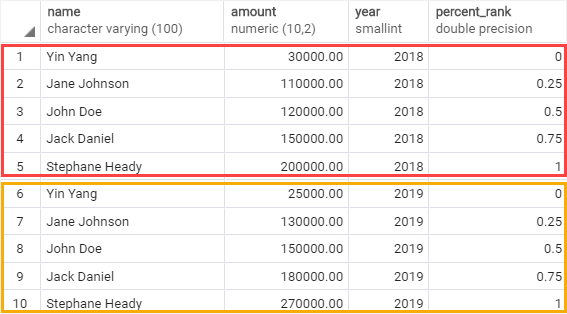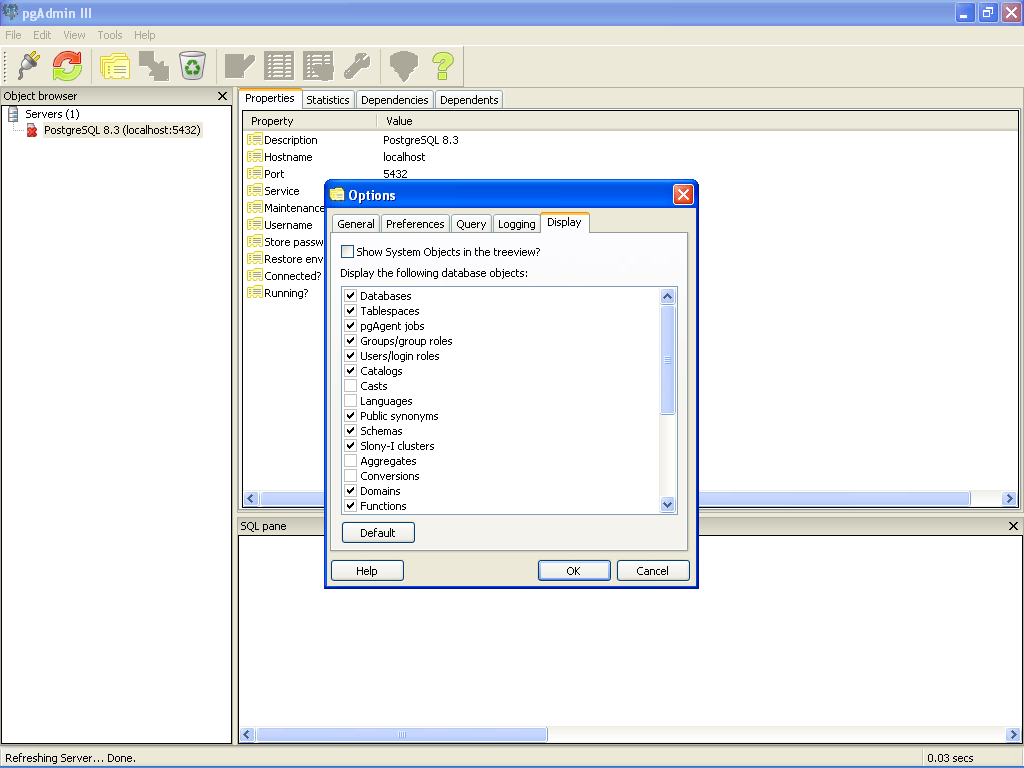

I did the same exercise for the row_number() and count() functions.

We see the PG13 performed the “ worst ,” and even when the PG14 showed a better trend, the PG15 was the best. We can see the timing from the PG15 version is better than the other versions.

To verify this is consistent, I got the Total Time for the WindowAgg node from 500 executions and plotted the next graph. The performance improvement is clear here. We can easily see from the WindowAgg node that the total time was smaller in the PG15 than in the other two. Returns the current row number within its partition, counting from 1. Returns the rank of the current row, with gaps that is, the row_number of the first row in its peer group. As we read in the documentation, the named functions work for: The “set of table rows” is usually identified as a “partition” defined by a column or columns. The window functionsĪs mentioned above, the window functions let us perform some calculations on a set of table rows related to the current one. First, let’s review what these functions can do. In the latest release, PostgreSQL 15, some performance improvements were added for the rank(), row_number(), and count() functions.
#POSTGRESQL RANK WINDOWS#
There are several built-in windows functions available in PostgreSQL. Usually, these tasks leverage window functions to do calculations “across a set of table rows that are somehow related to the current row,” as is described in the documentation. Now you're left with deciding which one is the best fit for your needs.When working with databases, there are always some projects oriented to performing analytics and reporting tasks over the information stored in the database. SummaryĪs you can see, different ranking functions have different goals. When identical rows were found ('apple'), they were given the rank '1', but the rank '2' wasn't skipped and was given to the next non-identical row in line ('grapes'). Example: select name, DENSE_RANK() OVER(ORDER BY name) from fruits The results:Īs you can see above, no ranks were skipped, all 1 to 4 are there.

When using DENSE_RANK, the same rules apply as we described for RANK(), with one difference - when similar rows are detected, the next rank in line isn't skipped. Therefore, the next row ('grapes') received the rank '3'. Also, once 'apple' was ranked with the number '1', the number '2' was skipped because the second row is identical. You can see above that identical rows (such as 'apple') were ranked with the same number. Example: select name, RANK() OVER(ORDER BY name) from fruits The results: Also, please note that if the function skipped a number while ranking (because of row similarity), that rank will be skipped. The only difference is that identical rows are marked with the same rank. This function is very similar to the ROW_NUMBER() function. You can see above that the results are ordered by the column we declared in the ORDER BY clause, and ranked accordingly. Example: select name, ROW_NUMBER() OVER(ORDER BY name) from fruits The results: This function will just rank all selected rows in an ascending order, regardless of the values that were selected. This is the simplest of all to understand. Let's look into the differences and similarities between three of them: RANK(), DENSE_RANK() and ROW_NUMBER().įor the sake of comparison, we'll work with the following demo table and values: PostgreSQL offers several ranking functions out of the box.


 0 kommentar(er)
0 kommentar(er)
